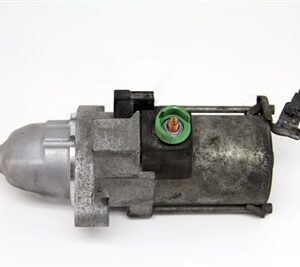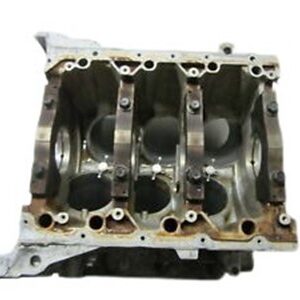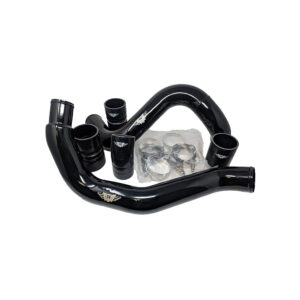Engine Cradle
Meaning of engine cradle: Sub-frame bolted to the vehicle frame or underbody, that supports the engine. The engine cradle may also support the transmission and the suspension system. Sometimes called the powertrain cradle. The engine cradle has both lower control arms attached.
*WE HAVE ALL COLOURS AND VARIANTS IN ALL BRANDS*
*TERMS AND CONDITIONS APPLY*
$1,500.00
CompareEngine Cradle
The engine cradle, also known as the engine subframe or engine support bracket, is a vital structural component of a vehicle’s chassis that supports and secures the engine and transmission. Positioned beneath the engine, the cradle is designed to provide stability, absorb vibrations, and distribute loads evenly throughout the vehicle’s frame. Its robust design ensures that the engine is mounted securely, contributing to overall vehicle performance and safety.
Material and Construction
Engine cradles are built from high-strength materials to endure the stresses and forces associated with engine operation:
- Steel: Most are made from high-strength steel, known for its durability and resistance to deformation. Steel cradles can withstand significant loads and provide a stable foundation for the engine and transmission.
- Aluminum: In some high-performance or luxury vehicles, are constructed from aluminum. Aluminum offers the advantage of being lightweight while maintaining strength, which helps in reducing overall vehicle weight and improving handling.
- Composite Materials: Advanced vehicles may use composite materials or blends of steel and aluminum to achieve a balance between weight and strength. These materials are selected for their specific performance characteristics and benefits.
- Coating: These are often coated or treated to prevent corrosion and wear. Protective coatings ensure the cradle remains resistant to environmental factors such as moisture, road salt, and debris.
Design and Functionality
The design of the incorporates several key features to ensure effective performance:
- Mounting Points: This includes multiple mounting points for securing the engine, transmission, and other components. These points are precisely aligned to ensure a proper fit and stable support.
- Structural Support: The cradle provides essential structural support to the engine and transmission, distributing the weight and forces exerted during operation. This support helps maintain proper engine alignment and reduces stress on the vehicle’s frame.
- Vibration Absorption: This is designed to absorb and dampen vibrations from the engine, contributing to a smoother and quieter driving experience. They often include mounting pads or isolators to enhance vibration isolation.
- Load Distribution: By evenly distributing the engine’s weight across the vehicle’s frame, the engine cradle helps prevent excessive stress on individual components and ensures balanced handling and stability.
Performance and Benefits
The engine cradle contributes to several aspects of vehicle performance and driving dynamics:
- Engine Stability: The ensures that the engine and transmission remain securely mounted, which is crucial for maintaining proper engine alignment and performance. This stability enhances drivability and handling.
- Reduced Vibration: By absorbing engine vibrations and shocks, the cradle improves ride comfort and reduces noise levels within the cabin. This contributes to a quieter and more enjoyable driving experience.
- Improved Handling: A well-designed engine cradle helps maintain consistent engine positioning, which can positively impact vehicle handling and cornering performance. This stability is especially important in high-performance and sports vehicles.
- Durability: The robust construction of the ensures that it can withstand the stresses and forces associated with engine operation. This durability contributes to the long-term reliability and safety of the vehicle.
Maintenance and Inspection
Regular maintenance and inspection of the are essential for ensuring its effectiveness and longevity:
- Visual Inspection: Periodically inspect the engine cradle for signs of damage, such as cracks, deformation, or corrosion. Check that all mounting bolts and hardware are secure and in good condition.
- Vibration Analysis: If you notice increased engine vibrations or unusual noises, it may indicate a problem with the engine cradle or its mounting points. A thorough inspection and diagnostic check can help identify and address any issues.
- Professional Assessment: In cases where the may be damaged or showing signs of wear, it is advisable to have a professional mechanic assess and repair or replace the cradle as needed.
Advanced Features and Technologies
Modern engine cradles may incorporate advanced features and technologies to enhance performance:
- Integrated Engine Mounts: Some cradles include integrated engine mounts or isolators that improve vibration isolation and contribute to better ride comfort.
- Adaptive Designs: Advanced cradles may feature adaptive designs or adjustable components that allow for customization of engine positioning and alignment based on specific vehicle needs or performance requirements.
- Enhanced Materials: The use of advanced composite materials or innovative coatings can improve the cradle’s performance, reducing weight while enhancing strength and durability.
Conclusion
The engine cradle is a critical component that provides essential support and stability to the engine and transmission, contributing to overall vehicle performance and comfort. Its robust construction, vibration absorption capabilities, and load distribution features ensure that the engine remains securely mounted and aligned. Regular maintenance and inspection are important for maintaining the cradle’s effectiveness and longevity. By understanding the functions and benefits of the engine cradle, vehicle owners can ensure optimal performance and a smoother driving experience.
Based on 0 reviews
Be the first to review “Engine Cradle” Cancel reply
Related products
-
Engine
Starter
0 out of 5(0)The starter is a vital component in your vehicle’s ignition system, ensuring a smooth and efficient engine start-up.
This compact motor, powered by a reliable battery, plays a crucial role in initiating your car’s operation under its own power. A well-functioning starter is essential for a seamless ignition process.
At the heart of the starter system is the starter relay, strategically positioned between the battery and the starter motor.
This relay efficiently transmits power, ensuring a reliable connection that is integral to the engine’s initiation.
Without a properly operating starter relay and motor, your vehicle may require a tow, leaving you stranded.
Whether you’re considering a replacement or an upgrade, our range of starters, including car starters, remote car starters, and remote start options, guarantees high performance and durability.
Trust in our starters to provide the reliability your vehicle deserves, ensuring a prompt and efficient start every time. Elevate your driving experience with our cutting-edge starter solutions.
SKU: n/a -
Engine
Engine Block
0 out of 5(0)Engine Blocks, also known as Cylinder Blocks, stand as the robust foundation of automotive powerhouses.
Meticulously engineered, they house essential components such as cylinders, intake and exhaust passages, coolant channels, and crankcases.
Crafted with precision, our Engine parts ensure optimal performance and longevity, delivering the reliability your vehicle demands.
These parts seamlessly integrate with various systems, offering a harmonious synergy that propels your vehicle’s efficiency to new heights.
Trust in the durability and functionality of our Engine Blocks, meticulously designed to meet the highest standards of automotive excellence.
Elevate your driving experience with a powerhouse that embodies innovation and quality – because every journey deserves the reliability that comes with our exceptional Engine parts.
SKU: n/a -
Engine
Powerstroke Engines Turbo Air Products – DK Engine Parts (Intercooler Pipes)
0 out of 5(0)Introducing the Powerstroke Engines Turbo Air Products by DK Engine Parts, specifically the Intercooler Pipes, designed to elevate your vehicle’s performance with precision and reliability.
Crafted with meticulous attention to detail, these intercooler pipes seamlessly integrate into your turbocharged engine system, optimizing airflow for enhanced efficiency.
Constructed for Powerstroke Engines, these intercooler pipes play a pivotal role in maximizing the potential of your turbocharger.
Engineered with cutting-edge technology, our Turbo Air Products ensure a seamless connection between components, promoting a balanced flow and distribution of air for optimal engine turbo function.
DK Engine Parts’ commitment to quality shines through in these intercooler pipes, forming a vital link in your turbo kit. Whether you’re upgrading your existing system or fine-tuning your turbo car, these intercooler pipes deliver unparalleled performance and durability.
Elevate your driving experience with Powerstroke Engines Turbo Air Products – where power meets precision.
SKU: n/a -
Engine
Flywheel
0 out of 5(0)A flywheel is an essential component in the realm of automotive engineering, serving as a heavy disc affixed to the end of a rotating shaft.
This pivotal device plays a multifaceted role in ensuring optimal engine performance. Firstly, it acts as a reservoir of rotational inertia, imparting stability to your vehicle’s engine by mitigating power pulses.
Moreover, the flywheel meticulously balances the engine, enhancing overall efficiency.
Facilitating the smooth initiation of your engine, the flywheel permits the seamless engagement of an electric starter.
Beyond these technical nuances, the flywheel establishes a critical link between the engine and transmission via a clutch, facilitating the transfer of power to the wheels.
As you consider your automotive needs, rest assured that our flywheel exemplifies precision engineering and reliability, ensuring a harmonious synergy within your vehicle’s intricate mechanics.
Explore the epitome of quality with our Flywheel, a testament to seamless performance and enduring value.
SKU: n/a -
Engine
Timing Chain
0 out of 5(0)Introducing our Precision Timing Chain, a vital component meticulously designed to synchronize the intricate dance between the crankshaft and camshaft(s) in your engine.
Crafted for optimal precision, this timing chain ensures seamless coordination, guaranteeing accurate timing for the precise opening and closing of engine valves during each cylinder’s firing cycle.
Built to withstand the rigors of engine dynamics, our timing chain boasts durability that exceeds industry standards.
Engineered for longevity, it operates within the heart of your engine, requiring periodic oil maintenance to ensure peak performance.
When it comes to reliability and efficiency, our timing chain stands as the epitome of excellence.
Experience the epitome of timing precision with our Timing Chain, a testament to engineering ingenuity. Our commitment is to deliver unrivaled performance, setting the benchmark for quality and durability in every rotation.
SKU: n/a









There are no reviews yet.